


Books in series

Batman
Shaman
1989

Batman and the Mad Monk
2007

Batman
Prey
2001

Batman
The Man Who Laughs
2005

Batman
Gothic
1990

Batman
Irresistible
2003

Batman
Four of a Kind
1995

Haunted Knight
1996

DC Comics Presents
Batman- Blink #1
2011

Batman
Venom
1991

Grandes Autores de Batman
El Largo Halloween
1997

Batman
Two-Face and Scarecrow - Year One
2005

Batman
Dark Victory
2000

Batman
Gotham After Midnight
2009

Batman
Year Two: Fear the Reaper
1990

Batman
Batgirl
1997

Batman
Strange Apparitions
1978
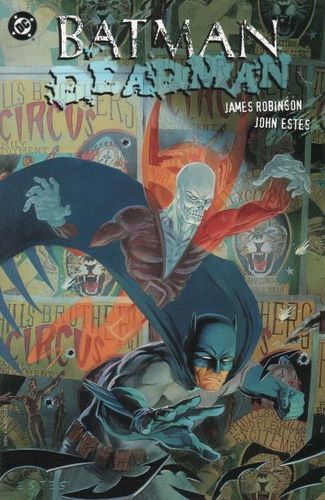
Batman/Deadman
Death and Glory
1996

Batman
Son of the Demon
1987

Batman
Second Chances
2015

Batman
Ten Nights of the Beast
1988

Batman
The Cult
1988

Batman
Arkham Tımarhanesi
1989

Batman
The Killing Joke
1988

Batman
The Many Deaths of the Batman
1989

Batman
The Lazarus Syndrome
1989
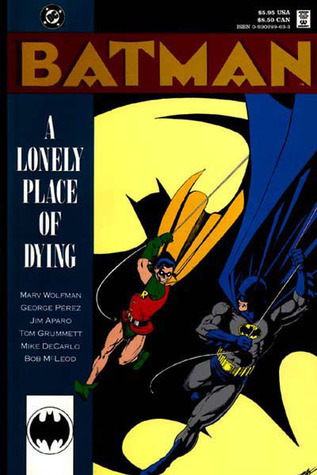
Batman
A Lonely Place of Dying
1989

Batman
Bride of the Demon
1990
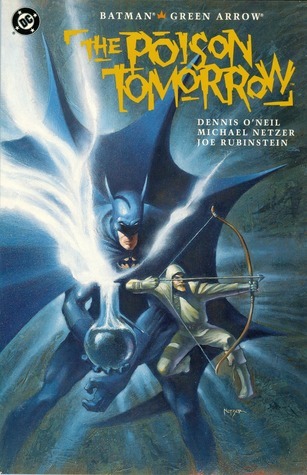
Batman/Green Arrow
The Poison Tomorrow
1992

Batman
Run, Riddler, Run #1
1992

Batman
Unseen
2010
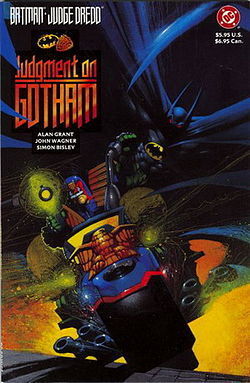
Batman/Judge Dredd
Judgment on Gotham
1991

Penguin Triumphant
1992

Batman
Birth of the Demon
1992

Legends of the World's Finest
1994
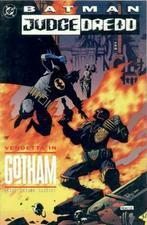
Batman/Judge Dredd
Vendetta in Gotham
1993

Batman Vs Predator
Bloodmatch
1995

Batman
Knightfall Omnibus Vol. 1
2017

Batman
Knightfall, Part One: Broken Bat
1993

Batman
Knightfall, Part Two: Who Rules the Night
1993
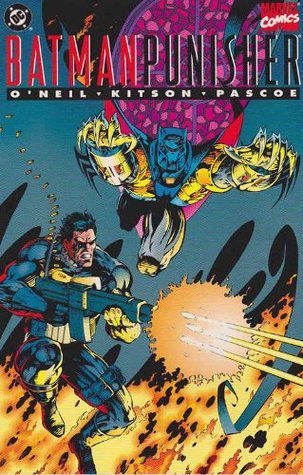
Batman/Punisher
Lake of Fire #1
1994

Batman
Knightfall, Part Three: Knightsend
1994
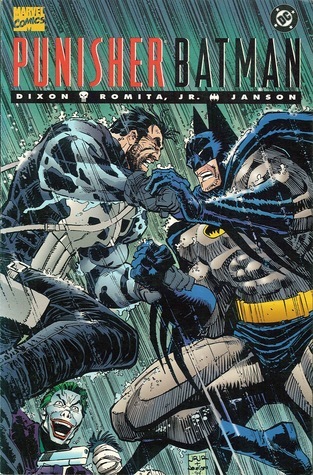
Punisher/Batman
Deadly Knights #1
1994
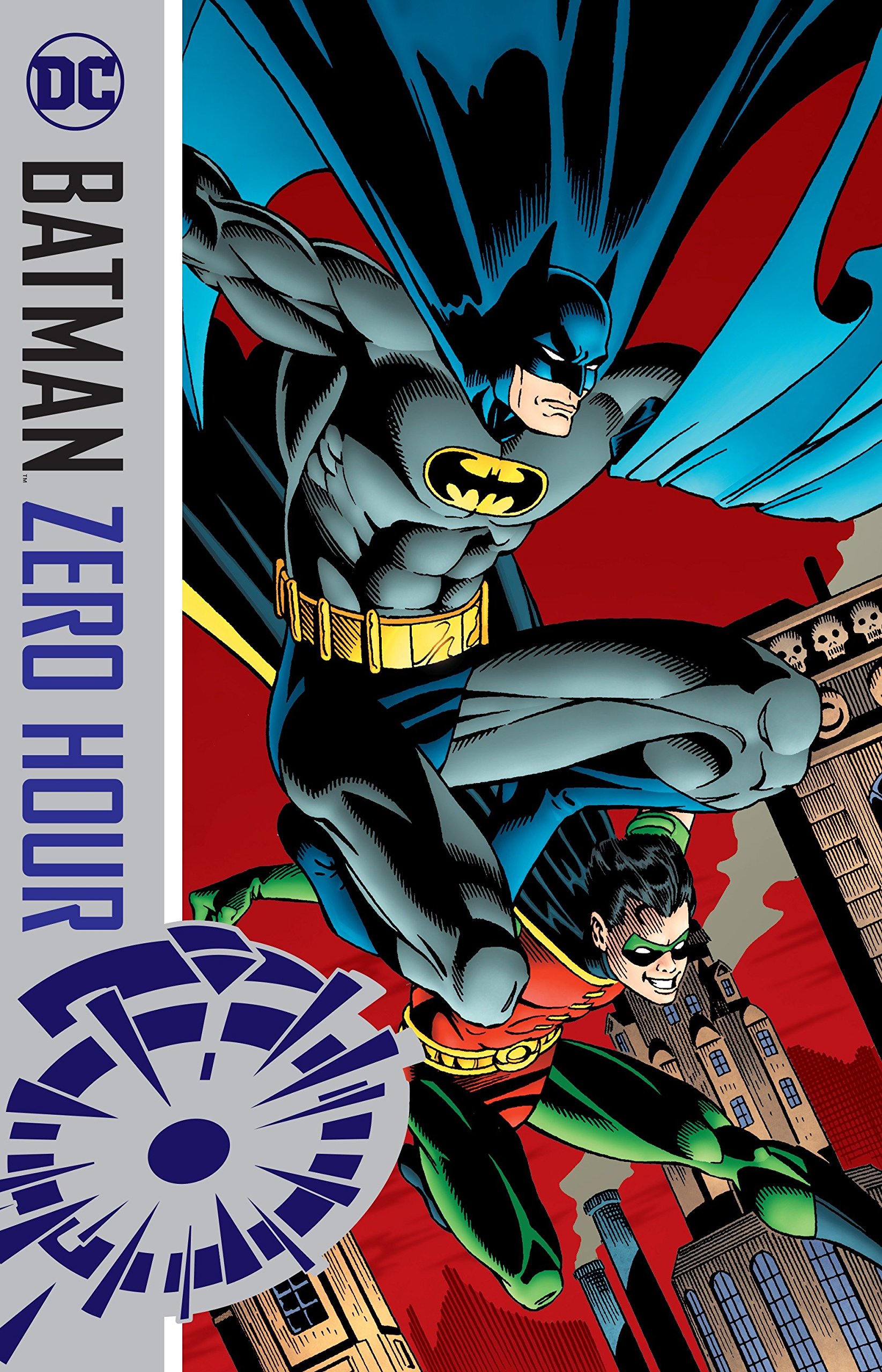
Batman
Zero Hour
1994

Batman
Prodigal
1995

Batman
Contagion
2016

Batman
The Chalice
1999

Joker
Devil's Advocate
1996

Batman
Riddler
1995

Spider-Man and Batman
Disordered Minds
1995

Batman
Demon
1996

Batman
Phantom Stranger
2000

Batman
Scottish Connection
1998

Batman/Aliens
1997

Batman
Child of Dreams
2000

Batman
Gordon of Gotham
2014

Batman
Cataclysm
1999

Batman
Road to No Man's Land, Vol. 1
2015

Batman
Road to No Man's Land, Vol. 2
2016

Batman
No Man's Land, Vol. 1
1999

Batman
No Man's Land Vol. 2: New Edition
1999

Batman
No Man's Land, Vol. 3
2000

Batman
No Man's Land, Vol. 5
2001

Batman
Evolution
2001

Batman/Joker
Switch
2003

Batman
The Ankh
2001

Arkham Asylum
Living Hell
2004

Batman
Death Mask
2008

Batman
Officer Down
2001

Batman/Huntress
Cry for Blood
2002

Batman
Absolution
2003

Batman by Ed Brubaker Vol. 1 (Batman
2016

Batman
False Faces
2008

Batman
Bruce Wayne, Murderer?
2002

Batman
Bruce Wayne, Fugitive, Vol. 1
2002

Batman
Bruce Wayne, Fugitive, Vol. 2
2003

Batman
Bruce Wayne, Fugitive, Vol. 3
2003

Batman
Hush
2002

Batman
City of Crime
2006

Batman
Hush Returns
2006

Superman/Batman, Vol. 1
Public Enemies
2004

Batman
As the Crow Flies
2004

Superman/Batman, Vol. 2
Supergirl
2004

Batman
War Drums
2004

Batman
War Games, Act 1: Outbreak
2005

Batman
War Games, Act 2: Tides
2005

Batman
War Games, Act 3: Endgame
2005

Batman
Death and the Maidens
2004

Batman
Under the Hood, Volume 1
2005

Batman
2006

Batman
Under the Hood, Volume 2
2006

Batman
Face the Face
2005

Superman and Batman Vs. Vampires and Werewolves
2009

Batman and Son
2005

Batman
The Resurrection of Ra's al Ghul
2008

Superman/Batman, Vol. 7
The Search for Kryptonite
2008

Trinity, Vol. 1
2008

Trinity, Vol. 2
2009

Batman
The Black Glove
2008

Batman
Heart of Hush
2009

Batman
R.I.P.
2008

Batman
Cos'è successo al Cavaliere Oscuro?
2009

Batman
Battle for the Cowl
2009

Batman
Long Shadows
2011

Batman Life After Death
2010

Batman & Robin
Batman Reborn
2011

Batman
Streets of Gotham - Leviathan
2010

Batman
Time and the Batman
2011

Batman & Robin, Vol. 2
Batman vs. Robin
2010

Batman
The Return of Bruce Wayne
2011

Batman & Robin, Vol. 3
Batman & Robin Must Die!
2011

Batman – The Dark Knight
Golden Dawn
2012

Batman & Robin, Vol. 4
Dark Knight vs. White Knight
2012

Batman
Eye of the Beholder
2011

Batman
The Black Mirror
2011

Batman Incorporated, Volume 1
Demon Star
2013
Authors

Kia Asamiya(麻宮 騎亜, born in 1963) is the pen-name of a popular Japanese manga artist whose work spans multiple genres and appeals to diverse audiences (1990s). He is well-known for using influences from American comics, television, and movies in his work, and describes himself as a big fan of both Batman and Star Wars. One of the most widely-published Japanese manga-ka, nearly all of his stories have been translated into other languages, including English. His two most successful and popular manga series to-date are Nadesico and Silent Möbius. Prior to becoming a manga artist, Asamiya graduated from the Tokyo Designer School, and then worked as a character designer for a number of anime series, and even designed models for some of the later Godzilla movies (1980s). For this career, he used a different pen-name, Michitaka Kikuchi (菊地 道隆), and maintained the two professional identities separately for many years. Several of the anime series that he worked on were very popular both inside and outside of Japan, most notably including Sonic Soldier Borgman. Even after focusing primarily on his manga career, Asamiya continued to do character designs and creative consultation on anime series based on his stories, occasionally under the Kikuchi name. In the early 2000s, Asamiya has shifted his focus from teenage and young-adult stories to stories designed for children and for an American audience. In the former case, he credits his young children as a motivation, but in the latter case, he points to a long-standing desire to work with his favorite American characters. To that end, he has worked on projects with Image Comics, Marvel Comics, and DC Comics, as well as developing a manga adaptation of the movie, "Star Wars: The Phantom Menace". While many Japanese artists (and artists in general) are quite reclusive, Asamiya often makes an effort to be available to his fans. He maintains a website with news and information about his studio, Studio TRON (named after the Disney movie TRON). He also aids and assists his Official Fan Club by sending them regular announcements and limited-edition merchandise. Despite these actions, he shunned all public photography, and had the often-hilarious habit of depicting himself with a placeholder sign for a face. It has become a trademark feature of his books that instead of a picture of the artist, there is an elaborately decorated rectangle sporting the words "Now Printing".



Joseph "Jeph" Loeb III is an Emmy and WGA nominated American film and television writer, producer and award-winning comic book writer. Loeb was a Co-Executive Producer on the NBC hit show Heroes, and formerly a producer/writer on the TV series Smallville and Lost. A four-time Eisner Award winner and five-time Wizard Fan Awards winner (see below), Loeb's comic book career includes work on many major characters, including Spider-Man, Batman, Superman, Hulk, Captain America, Cable, Iron Man, Daredevil, Supergirl, the Avengers, and Buffy the Vampire Slayer, much of which he has produced in collaboration with artist Tim Sale, who provides the comic art seen on Heroes.

Librarian note: There is more than one author in the GoodReads database with this name John Lindley Byrne is a British-born Canadian-American author and artist of comic books. Since the mid-1970s, Byrne has worked on nearly every major American superhero. Byrne's better-known work has been on Marvel Comics' X-Men and Fantastic Four and the 1986 relaunch of DC Comics’ Superman franchise. Coming into the comics profession exclusively as a penciler, Byrne began co-plotting the X-Men comics during his tenure on them, and launched his writing career in earnest with Fantastic Four (where he also started inking his own pencils). During the 1990s he produced a number of creator-owned works, including Next Men and Danger Unlimited. He also wrote the first issues of Mike Mignola's Hellboy series and produced a number of Star Trek comics for IDW Publishing.

In the late 1970s to early 1980s he drew fantasy ink pictures for the Dungeons & Dragons Basic and Expert game rulebooks. He first gained attention for his 1980s comic book series Elementals published by Comico, which he both wrote and drew. However, for reasons unknown, the series had trouble maintaining an original schedule, and Willingham's position in the industry remained spotty for many years. He contributed stories to Green Lantern and started his own independent, black-and-white comics series Coventry which lasted only 3 issues. He also produced the pornographic series Ironwood for Eros Comix. In the late 1990s Willingham reestablished himself as a prolific writer. He produced the 13-issue Pantheon for Lone Star Press and wrote a pair of short novels about the modern adventures of the hero Beowulf, published by the writer's collective, Clockwork Storybook, of which Willingham was a founding member. In the early 2000s he began writing extensively for DC Comics, including the limited series Proposition Player, a pair of limited series about the Greek witch Thessaly from The Sandman, and most notably the popular series Fables




Yoshinori Natsume 夏目義徳 Natsume Yoshinori, born August 23, 1975 in Hiroshima, Japan is a Japanese manga artist. He created Togari and authored the prestige format Batman manga mini-series Batman: Death Mask,in April 2008. As of January 4, 2013, he is currently working on a shonen manga for Grand Jump called White Tiger.


Librarian Note: There is more than one author by this name in the Goodreads database. Mike Johnson is a comic book writer. An almost lifelong Trekkie, he has scripted more Star Trek comic books than anyone else to date.

Trevor Von Eeden is a Guyanese-American comics artist, actor and writer known for his work on such titles as Black Lightning, Batman, Green Arrow, Power Man and Iron Fist, and the biographical series The Original Johnson. (source: Wikipedia)
Librarian Note: There is more than one author in the Goodreads database with this name. See notably: Michael 2^ Turner: fiction and poetry writer Michael Layne Turner: comics artist Michael 3^ Turner: planes and cars artist Michael 4^ Turner: computers Michael 5^ Turner: seed technology Michael 6^ Turner: comic book translator (mostly by Hergé)

Andersen Gabrych is a Northern California native. He’s written Detective Comics, Batman, Batgirl, Catwoman, and Omega Men for DC Comics, and is the author of the original graphic novel, Fog Town. As an actor he appeared most notably in the award-winning Edge of Seventeen and at HBO’s Aspen Comedy Festival. He currently lives in L.A. with his cat, Moses, and is the co-creator of Pyrasphere, “Hollywood’s fastest growing new religion,” and the subsequent documentary Bright Day! about this fictitious spiritual movement.

Mark Sable is a writer for stage, screen, television and comics. He is most noted as the writer/creator of the comics GRAVEYARD OF EMPIRES, GROUNDED, FEARLESS and HAZED for Image Comics and UNTHINKABLE for Boom! Studios. Mark has worked on WHAT IF? SPIDER-MAN: DARK REIGN for Marvel Comic and SUPERGIRL, TEEN TITANS: COLD CASE, TEEN TITANS SPOTLIGHT: CYBORG and TWO-FACE: YEAR ONE for DC Comics. He has contributed to Image's COMIC BOOK TATTOO, POPGUN and 24/7 anthologies. He is also the only person ever to work for both Charlie Rose and Howard Stern. Mark's most recent works include GRAVEYARD OF EMPIRES for Image Comics and RIFT RAIDERS, the launch book for Kickstart Comics. Both UNTHINKABLE and HAZED were optioned as feature films. Upcoming books include DECOY and BLUE SKY for Kickstart.

Will Pfeifer was born in 1967 in the town of Niles, Ohio. He attended Kent State University and graduated in 1989. He has resided in Rockford, Illinois since 1990, with his wife, Amy. Pfeifer, along with his comic writing duties, is the assistant features editor at the Rockford Register Star. He also writes a weekly DVD column for the Sunday paper.

Ed Brubaker (born November 17, 1966) is an Eisner Award-winning American cartoonist and writer. He was born at the National Naval Medical Center, Bethesda, Maryland. Brubaker is best known for his work as a comic book writer on such titles as Batman, Daredevil, Captain America, Iron Fist, Catwoman, Gotham Central and Uncanny X-Men. In more recent years, he has focused solely on creator-owned titles for Image Comics, such as Fatale, Criminal, Velvet and Kill or Be Killed. In 2016, Brubaker ventured into television, joining the writing staff of the HBO series Westworld.

Tom Peyer is an American comic book creator and editor. He is known for his 1999 revisioning of Golden Age super-hero Hourman, as well as his work on the Legion of Super-Heroes in the 1990s. An editor at DC Comics/Vertigo from 1987 to 1993, he served as assistant editor on Neil Gaiman's groundbreaking Sandman. Peyer has also worked for Marvel Comics, Wildstorm, and Bongo Comics. With John Layman, he wrote the 2007–2009 Tek Jansen comic book, based on the Stephen Colbert character.

Dirk Maggs, a freelance writer and director working across all media, is principally known for his work in radio, where he evolved radio drama into "Audio Movies," a near-visual approach combining scripts, layered sound effects, cinematic music and cutting edge technology. He pioneered the use of Dolby Surround in BBC Radio. He was among the first nominees for the Directors Guild of Great Britain Outstanding Achievement in Radio Award, and in 2005 he was invited to become one of the first Honorary Fellows of the University of Winchester for his work in the dramatic arts. From 2003 to 2005, Maggs produced new episodes of Douglas Adams' science fiction comedy series The Hitchhiker's Guide to the Galaxy, adapted from the novels based on the original radio series that Adams wrote. The books that Maggs adapted were written after the radio series ended its original run. He co-founded Perfectly Normal Productions Ltd (PNP) with Paul Weir and Richard Adams to create compelling high quality popular audio drama in serialized form for delivery to personal digital players and cell phones. Early in his career Dirk became known for directing adaptations of comic book storylines. He started in 1988 with the 50th Anniversary Man Of Steel docudrama Superman on Trial, carried on with a 50th birthday tribute to the Dark Knight: Batman: The Lazarus Syndrome. This was followed by The Adventures Of Superman, Batman: Knightfall, The Amazing Spider-Man and his final BBC Radio superhero series, Judge Dredd in 1995. Along the way his production of Superman: Doomsday and Beyond ("Superman Lives" in the USA) won the 1994 Audie Award for Best Dramatisation from the American Booksellers Association and Spoken Word Audio of The Year from Publishers Weekly.

Michael Green is an American television and film writer, as well as a comic book scripter. Green grew up in Mamaroneck, New York. Green has been a contributor for Superman/Batman. He will also co-write a Green Lantern movie with Greg Berlanti and Marc Guggenheim, set for release in 2011. He wrote the six-issue story arc "Lovers and Madmen" for Batman Confidential. Green was a producer and writer on Everwood and Heroes. Green is the creator and writer of Kings, an NBC drama based on the biblical story of King David but set in an alternate present. Kings premiered on 15 March 2009 but was cancelled soon after. The remainder of season 1 (thirteen episodes) was shown in the summer of 2009.

Devin Grayson is an avid gamer, former acting student, and enthusiastic reader fortunate enough to have turned a lifelong obsession with fictional characters into a dynamic writing career. She has a B.A. from Bard College, where she studied creative writing with novelist Mona Simpson. Best known for her work on the Batman titles for DC Comics, Devin has been a regular writer on Catwoman, Nightwing, and The Titans, and contributed to the award-winning No Man’s Land story arc. With the publication of Batman: Gotham Knights in March of 2000, she became the first (and, sadly, only as of 2020) female to create, launch and write an ongoing Batman title. Additional career highlights include the launch of the critically acclaimed series Omni for Humanoids, Doctor Strange: The Fate of Dreams, an original novel featuring Marvel’s Sorcerer Supreme, and USER—a highly personal three-part, creator-owned miniseries about gender identity and online role-playing, originally published by Vertigo and newly available as a collected edition hardcover through Image. Devin is also the creator of Yelena Belova, a Marvel character staring in the upcoming MCU Black Widow movie (played by Florence Pugh), Damien Darhk, a DC character now appearing regularly in CW’s Arrow and Legends of Tomorrow (played by Neal McDonough), and Catalina Flores, a DC character recently featured as the super-villain Tarantula in The Lego Batman Movie. Frequently cited for compelling character development and nuanced exploration of complex themes, Devin’s work has been showcased in mainstream media such as USA Today and Working Woman as well as in alternative press such as The Village Voice, The Advocate, and Curve magazine. Over the years, she has written in several different media and genres, from comic books and novels to video game scripts and short essays. She is currently working on an original graphic novel for Berger Books. Devin lives in Northern California with her husband, step-son, devoted Early Alert Canines Diabetic Alert Dog, and somewhat less devoted cat. Openly bisexual, she is a passionate advocate for the GLBTQ community, as well as being a committed environmentalist, and a public speaker for T1 Diabetes awareness and Diabetic Alert Dogs. She is always happy to take on a new challenge, especially if it involves making some new fictional friends.

Born February 12th, 1970 and raised on Long Island in New York, Judd began cartooning professionally at 16 with a single-paneled strip called Nuts & Bolts. This ran weekly through Anton Publications, a newspaper publisher that produced town papers in the Tri state area. He was paid 10 dollars a week. In August of 1988, Judd began attending the University of Michigan, Ann Arbor bringing Nuts & Bolts with him, but turning it into a four-panel strip and creating a cast of characters to tell his tales. Nuts & Bolts ran in The Michigan Daily 5 days a week from my freshman year (freshperson, or first-year student, as they liked to say at U of M), until graduation in the spring of 1992. A collection of those college years Nuts & Bolts was published in Ann Arbor. Watching the Spin-Cycle: the Nuts & Bolts collection had a small run of a thousand books a couple of months before graduation. They sold out in about 2 weeks and there are no plans to republish it. Before graduation he accepted a development deal with a major syndicate (syndicates are the major league baseball of comic strips. They act as an agent or broker and sell comic strips to newspapers). Judd spent the next year living in Boston, and developing his strip. The bottom dropped out when the syndicate decided that they were not going to pursue Nuts and Bolts for syndication and were terminating his development contract. Crushed and almost broke, he moved back in with his parents in July 1993. Getting by doing spot illustration jobs, Judd actually had Nuts & Bolts in development with Nickelodeon as an animated series. At one point he even turned the human characters into mice (Young Urban Mice and Rat Race were the working titles). In August of 1993 he saw an ad on MTV for The Real World III, San Francisco. For those who may not know, The Real World is a real-life documentary soap opera, where 7 strangers from around the country are put up in a house and filmed for six months. You get free rent, free moving costs, you get to live in San Francisco, and get to be a famous pig on television. The "Audition process," was everything from doing a video, to filling out a 15 page application, to in-person interviews with the producers, to being followed around and filmed for a day. 6 months and 6 "levels" later, Judd was in. On February 12th 1993, he moved into a house on Russian Hill and they began filming. Along the way Nuts & Bolts was given a weekly spot in the San Francisco Examiner. This WHOLE deal was filmed and aired for the show. They moved out in June of 1994, a couple of days after O.J.'s Bronco chase in L.A. The show began airing a week later. Along with the weekly San Francisco Examiner gig, Judd began doing illustrations for The Complete Idiot's Guide series through QUE Books. Since then, Judd has illustrated over 300 Idiot's Guides and still does the cartoons for the computer oriented Idiot's Guides line. A collection of the computer related titles' cartoons was published in 1997 as Terminal Madness, The Complete Idiot's Guide Computer Cartoon Collection. Not too long after the show had been airing, Judd's roommate from the show and good friend, AIDS activist Pedro Zamora, took ill from AIDS complications. Pedro was to begin a lecture tour in September. Judd agreed to step in and speak on his behalf until he was well enough to do so again. In August of 1994, Pedro checked into a hospital and never recovered. Pedro passed away on November 11, 1994. He was 22. Judd continued to lecture about Pedro, Aids education and prevention and what it's like to live with some one who is living with AIDS for most of 1995. Speaking at over 70 schools across the country, Judd describes it as, "...the most fulfilling and difficult time in my life." But time and emotional constraints forced him to stop lecturing. In May of 1995 Judd found the weekly Nuts & Bolts under-whelming and decided to give syndication another go. Re-vamping Nuts & Bolts


Charles "Chuck" Dixon is an American comic book writer, perhaps best-known for long runs on Batman titles in the 1990s. His earliest comics work was writing Evangeline first for Comico Comics in 1984 (then later for First Comics, who published the on-going series), on which he worked with his then-wife, the artist Judith Hunt. His big break came one year later, when editor Larry Hama hired him to write back-up stories for Marvel Comics' The Savage Sword of Conan. In 1986, he began working for Eclipse Comics, writing Airboy with artist Tim Truman. Continuing to write for both Marvel and (mainly) Eclipse on these titles, as well as launching Strike! with artist Tom Lyle in August 1987 and Valkyrie with artist Paul Gulacy in October 1987, he began work on Carl Potts' Alien Legion series for Marvel's Epic Comics imprint, under editor Archie Goodwin. He also produced a three-issue adaptation of J. R. R. Tolkien's The Hobbit for Eclipse with artist David Wenzel between 1989 and 1990, and began writing Marc Spector: Moon Knight in June 1989. His Punisher OGN Kingdom Gone (August, 1990) led to him working on the monthly The Punisher War Journal (and later, more monthly and occasional Punisher titles), and also brought him to the attention of DC Comics editor Denny O'Neil, who asked him to produce a Robin mini-series. The mini proved popular enough to spawn two sequels - The Joker's Wild (1991) and Cry of the Huntress (1992) - which led to both an ongoing monthly series (which Dixon wrote for 100 issues before leaving to work with CrossGen Comics), and to Dixon working on Detective Comics from #644-738 through the major Batman stories KnightFall & KnightsEnd (for which he helped create the key character of Bane), DC One Million, Contagion, Legacy, Cataclysm and No Man's Land . Much of his run was illustrated by Graham Nolan. He was DC's most prolific Batman-writer in the mid-1990s (rivalled perhaps in history by Bill Finger and Dennis O'Neil) - in addition to writing Detective Comics he pioneered the individual series for Robin, Nightwing (which he wrote for 70 issues, and returned to briefly with 2005's #101) and Batgirl, as well as creating the team and book Birds of Prey . While writing multiple Punisher and Batman comics (and October 1994's Punisher/Batman crossover), he also found time to launch Team 7 for Jim Lee's WildStorm/Image and Prophet for Rob Liefeld's Extreme Studios. He also wrote many issues of Catwoman and Green Arrow, regularly having about seven titles out each and every month between the years 1993 and 1998. In March, 2002, Dixon turned his attention to CrossGen's output, salthough he co-wrote with Scott Beatty the origin of Barbara Gordon's Batgirl in 2003's Batgirl: Year One. For CrossGen he took over some of the comics of the out-going Mark Waid, taking over Sigil from #21, and Crux with #13. He launched Way of the Rat in June 2002, Brath (March '03), The Silken Ghost (June '03) and the pirate comic El Cazador (Oct '03), as well as editing Robert Rodi's non-Sigilverse The Crossovers. He also wrote the Ruse spin-off Archard's Agents one-shots in January and November '03 and April '04, the last released shortly before CrossGen's complete collapse forced the cancellation of all of its comics, before which Dixon wrote a single issue of Sojourn (May '04). Dixon's Way of the Rat #24, Brath #14 and El Cazador #6 were among the last comics released from the then-bankrupt publisher. On June 10, 2008, Dixon announced on his forum that he was no longer "employed by DC Comics in any capacity."

Gerard Jones is an award-winning American author and comic book writer. From 1987 to 2001, Jones wrote many comic books for Marvel Comics, DC Comics, Dark Horse Comics, Viz Media, Malibu Comics and other publishers; including Green Lantern, Justice League, Prime, Ultraforce, El Diablo, Wonder Man, Martian Manhunter, Elongated Man, The Shadow, Pokémon, and Batman. Jones is author of the Eisner Award-winning Men of Tomorrow: Geeks, Gangsters, and the Birth of the Comic Book (2004); Killing Monsters: Why Children Need Fantasy, Superheroes and Make-Believe Violence (2002), and Honey I'm Home: Sitcoms Selling the American Dream (1993). Jones is co-author with Will Jacobs of The Beaver Papers (1983), The Comic Book Heroes (1985, 1996), and the comic book The Trouble with Girls (1987-1993). From 1983 to 1988, Jacobs and Jones were contributors to National Lampoon magazine. He and Jacobs began writing humorous fiction again in 2008 with the online series My Pal Splendid Man and Million Dollar Ideas
Marz is well known for his work on Silver Surfer and Green Lantern, as well as the Marvel vs DC crossover and Batman/Aliens. He also worked on the CrossGen Comics series Scion, Mystic, Sojourn, and The Path. At Dark Horse Comics he created Samurai: Heaven and Earth and various Star Wars comics. He has also done work for Devil’s Due Publishing’s Aftermath line, namely Blade of Kumori. In 1995, he had a brief run on XO-Manowar, for Valiant Comics. Marz’s more recent works includes a number of Top Cow books including Witchblade and a Cyberforce relaunch. For DC Comics, he has written Ion, a 12 part comic book miniseries that followed the Kyle Rayner character after the One Year Later event, and Tales of the Sinistro Corps Presents: Parallax and Tales of the Sinestro Corps Presents: Ion, two one-shot tie-ins to the Green Lantern crossover, The Sinestro Corps War. His current creator owned projects include “Dragon Prince” (Top Cow) and “Samurai : Heaven and Earth” (Dark Horse). Photo by Luigi Novi.

Dwayne McDuffie was an American writer of comic books and television. His notable works included creating the animated series Static Shock, writing and producing the animated series Justice League Unlimited, and co-founding the comic book company Milestone Media. He co-hosted a radio comedy program, and also wrote under a pseudonym for stand-up comedians and late-night television comedy programs. While working as a copy-editor for a financial magazine, a friend got him an interview for an assistant editor position at Marvel Comics. While on staff at Marvel as Bob Budiansky's assistant on special projects, McDuffie also scripted stories for the company. His first major work was Damage Control, a series about the company that shows up between issues and tidies up the mess left by the latest round of superhero/supervillain battles. While an editor at Marvel, he submitted a spoof proposal for a comic entitled Teenage Negro Ninja Thrasher in response to Marvel's treatment of its black characters. Becoming a freelancer in early 1990, McDuffie followed that with dozens of various comics titles for Marvel comics, DC Comics, and Archie Comics. In 1992, wanting to express a multi-cultural sensibility that he felt was missing in comic books, McDuffie co-founded Milestone Media, a comic book company owned by African-Americans. After Milestone had ceased publishing new comics, Static was developed into an animated series Static Shock. McDuffie was hired to write and story-edit on the series, writing 11 episodes. McDuffie was hired as a staff writer for the animated series Justice League and was promoted to story editor and producer as the series became Justice League Unlimited. During the entire run of the animated series, McDuffie wrote, produced, or story-edited 69 out of the 91 episodes. McDuffie also wrote the story for the video game Justice League Heroes. McDuffie was hired to help revamp and story-edit Cartoon Network's popular animated Ben 10 franchise with Ben 10: Alien Force, continuing the adventures of the ten-year-old title character into his mid and late teenage years. During the run of the series, McDuffie wrote episode 1-3, 14, 25-28, 45 and 46 and/or story-edited all forty-six episodes. On February 22, 2011, McDuffie died from complications due to a surgical procedure performed the previous evening. http://en.wikipedia.org/wiki/Dwayne_M...

Geoff Johns originally hails from Detroit, Michigan. He attended Michigan State University, where he earned a degree in Media Arts and Film. He moved to Los Angeles in the late 1990s in search of work within the film industry. Through perseverance, Geoff ended up as the assistant to Richard Donner, working on Conspiracy Theory and Lethal Weapon 4. During that time, he also began his comics career writing Stars and S.T.R.I.P.E. and JSA (co-written with David S. Goyer) for DC Comics. He worked with Richard Donner for four years, leaving the company to pursue writing full-time. His first comics assignments led to a critically acclaimed five-year run on the The Flash. Since then, he has quickly become one of the most popular and prolific comics writers today, working on such titles including a highly successful re-imagining of Green Lantern, Action Comics (co-written with Richard Donner), Teen Titans, Justice Society of America, Infinite Crisis and the experimental breakout hit series 52 for DC with Grant Morrison, Greg Rucka and Mark Waid. Geoff received the Wizard Fan Award for Breakout Talent of 2002 and Writer of the Year for 2005, 2006, 2007, and 2008 as well as the CBG Writer of the Year 2003 thru 2005, 2007 and CBG Best Comic Book Series for JSA 2001 thru 2005. Geoff also developed BLADE: THE SERIES with David S. Goyer, as well as penned the acclaimed “Legion” episode of SMALLVILLE. He also served as staff writer for the fourth season of ROBOT CHICKEN. Geoff recently became a New York Times Bestselling author with the graphic novel Superman: Brainiac with art by Gary Frank.

Douglas "Doug" Mahnke is an American comic book artist and penciller. He embarked on a love affair with comics at the age of five, having received a pile of Spider-Man issues from a rugby-playing college student named Mike who lived in his basement. A consistent interest in the medium, coupled with some art skill, landed Mahnke a job drawing comics for Dark Horse at the age of 24. His first gig was illustrating a moody detective one-shot entitled Homicide written by John Arcudi. The two went on to collaborate on Dark Horse's The Mask and their creator-owned series Major Bummer, originally published by DC. Since then, Mahnke has worked almost exclusively for DC on a wide variety of titles, including Superman: The Man Of Steel; JLA; Justice League; Batman; Team Zero; Seven Soldiers: Frankenstein; Black Adam: The Dark Age; Stormwatch: P.H.D.; Final Crisis; Green Lantern; Superman/Wonder Woman; Superman; and Detective Comics.

Mike W. Barr is an American writer of comic books, and mystery, and science fiction novels. Barr's debut as a comics professional came in DC Comics' Detective Comics #444 (Dec. 1974-Jan. 1975), for which he wrote an 8-page back-up mystery feature starring the Elongated Man. Another Elongated Man story followed in Detective Comics #453 (November 1975). He wrote text articles and editorial replies in letter columns for the next few years. By mid-1980 he was writing regularly for both DC and Marvel, including stories for Marvel Team-Up, Mystery in Space, Green Lantern, and various Batman titles. Legion of Super-Heroes #277 (July 1981) saw him take on editorial duties at DC, while writing issues of DC's Star Trek comic, for whom he created the native American character Ensign Bearclaw and a pacifist Klingon named Konom. In December 1982, he and artist Brian Bolland began Camelot 3000, a 12 issue limited series that was one of DC Comics' first direct market projects. In August 1983, Barr created what may well be his most enduring work, the monthly title Batman and the Outsiders with art by Jim Aparo. Barr wrote every issue of the original series, and its Baxter paper spinoff, The Outsiders. His other comics work includes Mantra and Maze Agency as well as the 1987 OGN hardcover book Batman: Son of the Demon (with art by Jerry Bingham), proceeds from which reputedly "restored DC Comics to first place in sales after fifteen years." This title, and Barr's work on Batman with artist Alan Davis have been cited by Grant Morrison as key inspirations for his recent (2006) run on the Batman title. In 2007, he wrote a two-part story for the pages of DC's JLA: Classified (#47-48, Jan-Feb 2008), returned to the Outsiders with Outsiders: Five of a Kind—Katana/Shazam #1 (Oct 2007), contributed to Tokyopop's Star Trek: The Manga, and relaunched Maze Agency at IDW Publishing. He has also scripted many of Bongo Comics' Simpsons titles, including a Christmas story for 2010. In May 2010, the Invisible College Press published Barr's science fiction/fantasy novel, Majician/51, about the discoveries of a scientist working at Area 51.


John Salvatore Romita, Jr. is an American comic book artist best known for his extensive work for Marvel Comics from the 1970s to the 2000s. He is often referred to as JRJR (the abbreviation of John Romita, Jr.) He is the son of comic book artist John Romita Sr.

James P. "Jim" Starlin is an American comic book writer and artist. With a career dating back to the early 1970s, he is best known for "cosmic" tales and space opera; for revamping the Marvel Comics characters Captain Marvel and Adam Warlock; and for creating or co-creating the Marvel characters Thanos and Shang-Chi, Master of Kung Fu. Death and suicide are recurring themes in Starlin's work: Personifications of Death appeared in his Captain Marvel series and in a fill-in story for Ghost Rider; Warlock commits suicide by killing his future self; and suicide is a theme in a story he plotted and drew for The Rampaging Hulk magazine. In the mid-1970s, Starlin contributed a cache of stories to the independently published science-fiction anthology Star Reach. Here he developed his ideas of God, death, and infinity, free of the restrictions of mainstream comics publishers' self-censorship arm, the Comics Code Authority. Starlin also drew "The Secret of Skull River", inked by frequent collaborator Al Milgrom, for Savage Tales #5 (July 1974). When Marvel Comics wished to use the name of Captain Marvel for a new, different character,[citation needed] Starlin was given the rare opportunity to produce a one-shot story in which to kill off a main character. The Death of Captain Marvel became the first graphic novel published by the company itself. ( In the late 1980s, Starlin began working more for DC Comics, writing a number of Batman stories, including the four-issue miniseries Batman: The Cult (Aug.-Nov. 1988), and the storyline "Batman: A Death in the Family", in Batman #426-429 (Dec. 1988 – Jan. 1989), in which Jason Todd, the second of Batman's Robin sidekicks, was killed. The death was decided by fans, as DC Comics set up a hotline for readers to vote on as to whether or not Jason Todd should survive a potentially fatal situation. For DC he created Hardcore Station.

Fabian Nicieza is a writer and editor who is best known as the co-creator of DEADPOOL and for his work on Marvel titles such as X-Men, X-Force, New Warriors, and Robin. His first novel, the Edgar Award-nominated SUBURBAN DICKS, a sarcastic murder mystery, is on sale now from Putnam Books. The Dicks will return in THE SELF-MADE WIDOW, coming June 21st.

Grant Morrison has been working with DC Comics for twenty five years, after beginning his American comics career with acclaimed runs on ANIMAL MAN and DOOM PATROL. Since then he has written such best-selling series as JLA, BATMAN and New X-Men, as well as such creator-owned works as THE INVISIBLES, SEAGUY, THE FILTH, WE3 and JOE THE BARBARIAN. In addition to expanding the DC Universe through titles ranging from the Eisner Award-winning SEVEN SOLDIERS and ALL-STAR SUPERMAN to the reality-shattering epic of FINAL CRISIS, he has also reinvented the worlds of the Dark Knight Detective in BATMAN AND ROBIN and BATMAN, INCORPORATED and the Man of Steel in The New 52 ACTION COMICS. In his secret identity, Morrison is a "counterculture" spokesperson, a musician, an award-winning playwright and a chaos magician. He is also the author of the New York Times bestseller Supergods, a groundbreaking psycho-historic mapping of the superhero as a cultural organism. He divides his time between his homes in Los Angeles and Scotland.


Doug Moench, is an American comic book writer notable for his Batman work and as the creator of Black Mask, Moon Knight and Deathlok. Moench has worked for DC Comics, Marvel Comics, Dark Horse Comics and many other smaller companies; he has written hundreds of issues of many different comics, and created dozens of characters, such as Moon Knight. In 1973, Moench became the de facto lead writer for the Marvel black-and-white magazine imprint Curtis Magazines. He contributed to the entire runs of Planet of the Apes, Rampaging Hulk (continuing on the title when it changed its name to The Hulk!) and Doc Savage, while also serving as a regular scribe for virtually every other Curtis title during the course of the imprint's existence. Moench is perhaps best known for his work on Batman, whose title he wrote from 1983–1986 and then again from 1992–1998. (He also wrote the companion title Detective Comics from 1983–1986.) Moench is a frequent and longtime collaborator with comics artist Paul Gulacy. The pair are probably best known for their work on Shang-Chi: Master of Kung Fu, which they worked on together from 1974–1977. They also co-created Six from Sirius, Slash Maraud, and S.C.I. Spy, and have worked together on comics projects featuring Batman, Conan the Barbarian and James Bond. Moench has frequently been paired with the artist and inker team of Kelley Jones and John Beatty on several Elseworlds Graphic Novels and a long run of the monthly Batman comic.

STEVE NILES is one of the writers responsible for bringing horror comics back to prominence, and was recently named by Fangoria magazine as one of it's "13 rising talents who promise to keep us terrified for the next 25 years." Niles is currently working for the four top American comic publishers - Marvel, DC, Image and Dark Horse. He got his start in the industry when he formed his own publishing company called Arcane Comix, where he published, edited and adapted several comics and anthologies for Eclipse Comics. His adaptations include works by Clive Barker, Richard Matheson and Harlan Ellison. Steve resides in Los Angeles in his bachelor pad with one cat. While there's no crawlspace, there is a questionable closet in one corner and no one is quite sure what is hidden in there...but we have an idea. —from the author's website

Dennis "Denny" O'Neil was a comic book writer and editor best known for his work for Marvel Comics and DC Comics from the 1960s through the 1990s, and Group Editor for the Batman family of titles until his retirement. His best-known works include Green Lantern/Green Arrow and Batman with Neal Adams, The Shadow with Michael Kaluta and The Question with Denys Cowan. As an editor, he is principally known for editing the various Batman titles. From 2013 unti his death, he sat on the board of directors of the charity The Hero Initiative and served on its Disbursement Committee.

aka David Peters Peter Allen David (often abbreviated PAD) is an American writer, best known for his work in comic books and Star Trek novels. David often jokingly describes his occupation as "Writer of Stuff". David is noted for his prolific writing, characterized by its mingling of real world issues with humor and references to popular culture. He also uses metafiction frequently, usually to humorous effect, as in his work on the comic book Young Justice.

Kurt Busiek is an American comic book writer notable for his work on the Marvels limited series, his own title Astro City, and his four-year run on Avengers. Busiek did not read comics as a youngster, as his parents disapproved of them. He began to read them regularly around the age of 14, when he picked up a copy of Daredevil #120. This was the first part of a continuity-heavy four-part story arc; Busiek was drawn to the copious history and cross-connections with other series. Throughout high school and college, he and future writer Scott McCloud practiced making comics. During this time, Busiek also had many letters published in comic book letter columns, and originated the theory that the Phoenix was a separate being who had impersonated Jean Grey, and that therefore Grey had not died—a premise which made its way from freelancer to freelancer, and which was eventually used in the comics. During the last semester of his senior year, Busiek submitted some sample scripts to editor Dick Giordano at DC Comics. None of them sold, but they did get him invitations to pitch other material to DC editors, which led to his first professional work, a back-up story in Green Lantern #162 (Mar. 1983). Busiek has worked on a number of different titles in his career, including Arrowsmith, The Avengers, Icon, Iron Man, The Liberty Project, Ninjak, The Power Company, Red Tornado, Shockrockets, Superman: Secret Identity, Thunderbolts, Untold Tales of Spider-Man, JLA, and the award-winning Marvels and the Homage Comics title Kurt Busiek's Astro City. In 1997, Busiek began a stint as writer of Avengers alongside artist George Pérez. Pérez departed from the series in 2000, but Busiek continued as writer for two more years, collaborating with artists Alan Davis, Kieron Dwyer and others. Busiek's tenure culminated with the "Kang Dynasty" storyline. In 2003, Busiek re-teamed with Perez to create the JLA/Avengers limited series. In 2003, Busiek began a new Conan series for Dark Horse Comics, which he wrote for four years. In December 2005 Busiek signed a two-year exclusive contract with DC Comics. During DC's Infinite Crisis event, he teamed with Geoff Johns on a "One Year Later" eight-part story arc (called Up, Up and Away) that encompassed both Superman titles. In addition, he began writing the DC title Aquaman: Sword of Atlantis from issues 40-49. Busiek was the writer of Superman for two years, before followed by James Robinson starting from Superman #677. Busiek wrote a 52-issue weekly DC miniseries called Trinity, starring Batman, Superman and Wonder Woman. Each issue (except for issue #1) featured a 12-page main story by Busiek, with art by Mark Bagley, and a ten-page backup story co-written by Busiek and Fabian Nicieza, with art from various artists, including Tom Derenick, Mike Norton and Scott McDaniel. Busiek's work has won him numerous awards in the comics industry, including the Harvey Award for Best Writer in 1998 and the Eisner Award for Best Writer in 1999. In 1994, with Marvels, he won Best Finite Series/Limited Series Eisner Award and the Best Continuing or Limited Series Harvey Award; as well as the Harvey Award for Best Single Issue or Story (for Marvels #4) in 1995. In 1996, with Astro City, Busiek won both the Eisner and Harvey awards for Best New Series. He won the Best Single Issue/Single Story Eisner three years in a row from 1996–1998, as well as in 2004. Busiek won the Best Continuing Series Eisner Award in 1997–1998, as well as the Best Serialized Story award in 1998. In addition, Astro City was awarded the 1996 Best Single Issue or Story Harvey Award, and the 1998 Harvey Award for Best Continuing or Limited Series. Busiek was given the 1998 and 1999 Comics Buyer's Guide Awards for Favorite Writer, with additional nominations in 1997 and every year from 2000 to 2004. He has also received numerous Squiddy Awards, having been selected as favorite writer four years in a row from 1995 to 1998,

Horrocks has been involved in the New Zealand comic scene since the mid 1980s, when he co-founded Razor with Cornelius Stone and had his work published in the University of Auckland student magazine Craccum. Later in the decade he began to get international recognition, having work published by Australia's Fox Comics and the American Fantagraphics Books. He then moved to the United Kingdom where he self-published several mini-comics and co-founded Le Roquet, a comics annual. Upon returning to New Zealand in the mid 1990s, Horrocks had a half-page strip called 'Milo's Week' in the current affairs magazine New Zealand Listener from 1995 to 1997. He also produced Pickle, published by Black Eye Comics, in which the 'Hicksville' story originally appeared. Hicksville was published in book form in 1998, achieving considerable critical success. French, Spanish and Italian editions have since been published. In the last decade Horrocks has written and drawn a wide range of projects including scripts for Vertigo's Hunter: The Age of Magic and the Batgirl series, and Atlas, published by Drawn and Quarterly. Horrocks' work has been displayed at the Auckland Art Gallery and Wellington's City Gallery. In 2002 Hicksville won an Eisner Award for Talent Deserving of Wider Recognition, and the same year Atlas was nominated for the Harvey Award for Best Single Issue or Story in 2002. In 2006 he was appointed University of Auckland/Creative New Zealand Literary Fellow.[1] In an interview with Comics Bulletin, Horrocks claimed that his first words were 'Donald Duck'.






